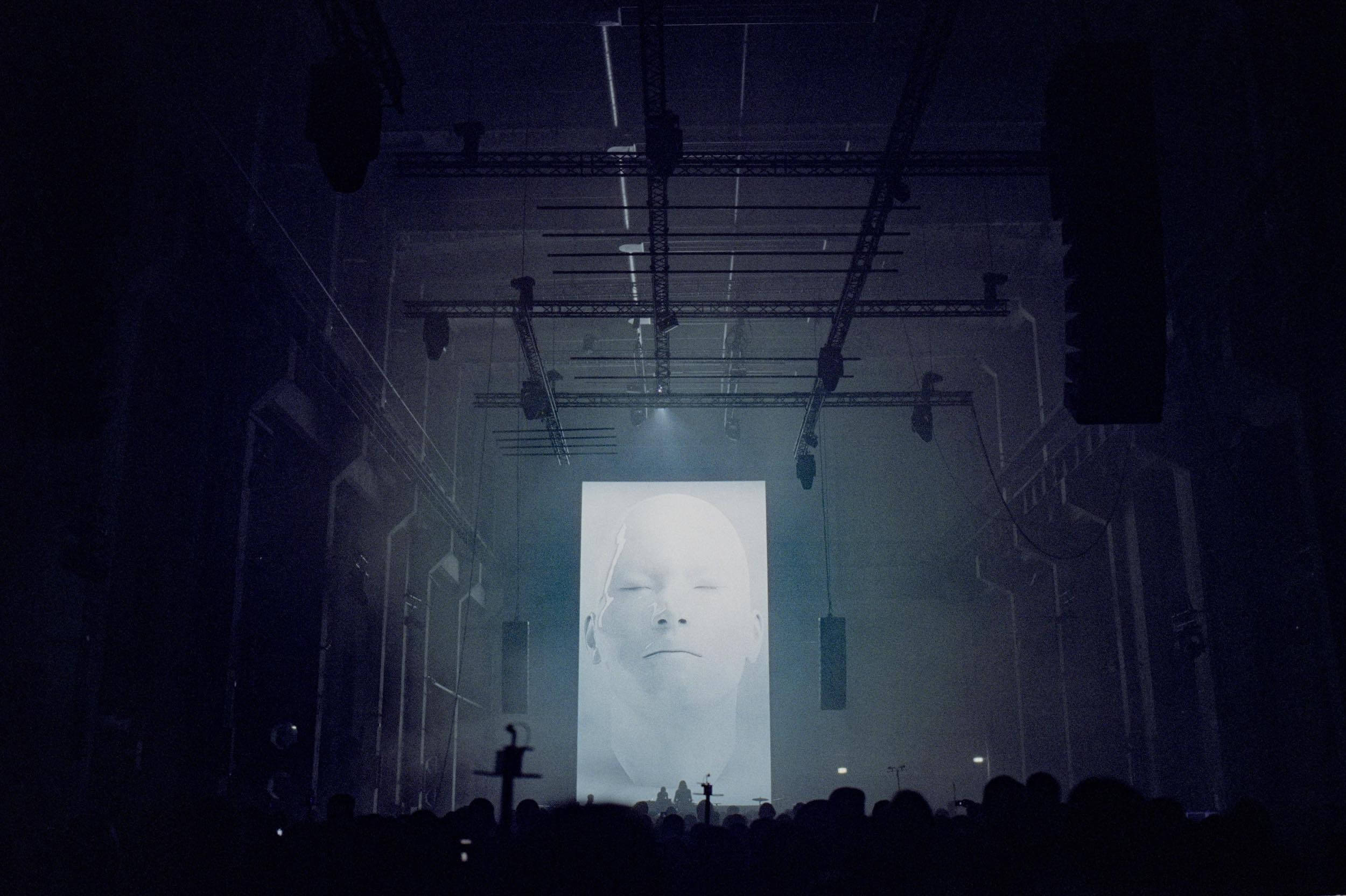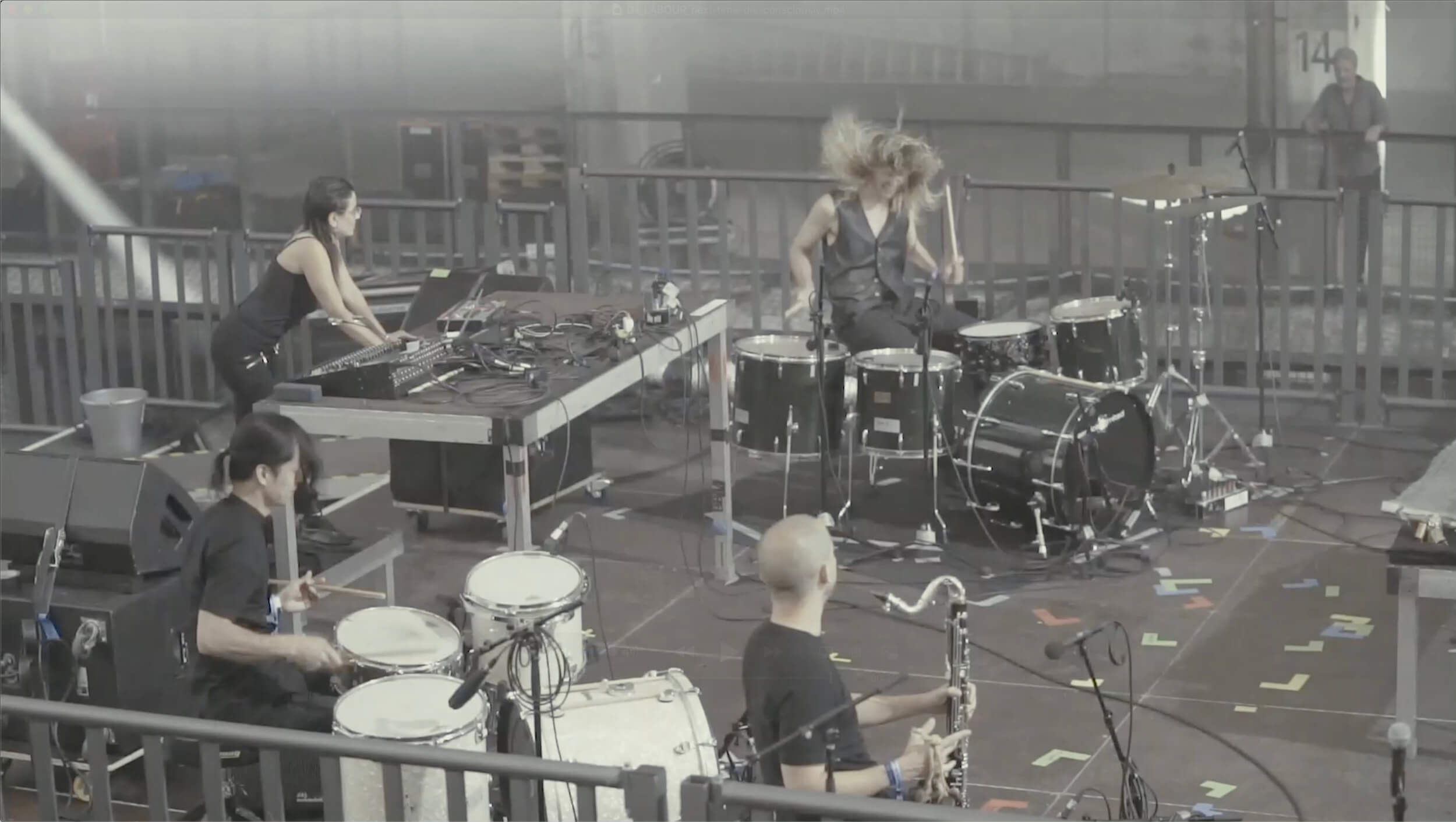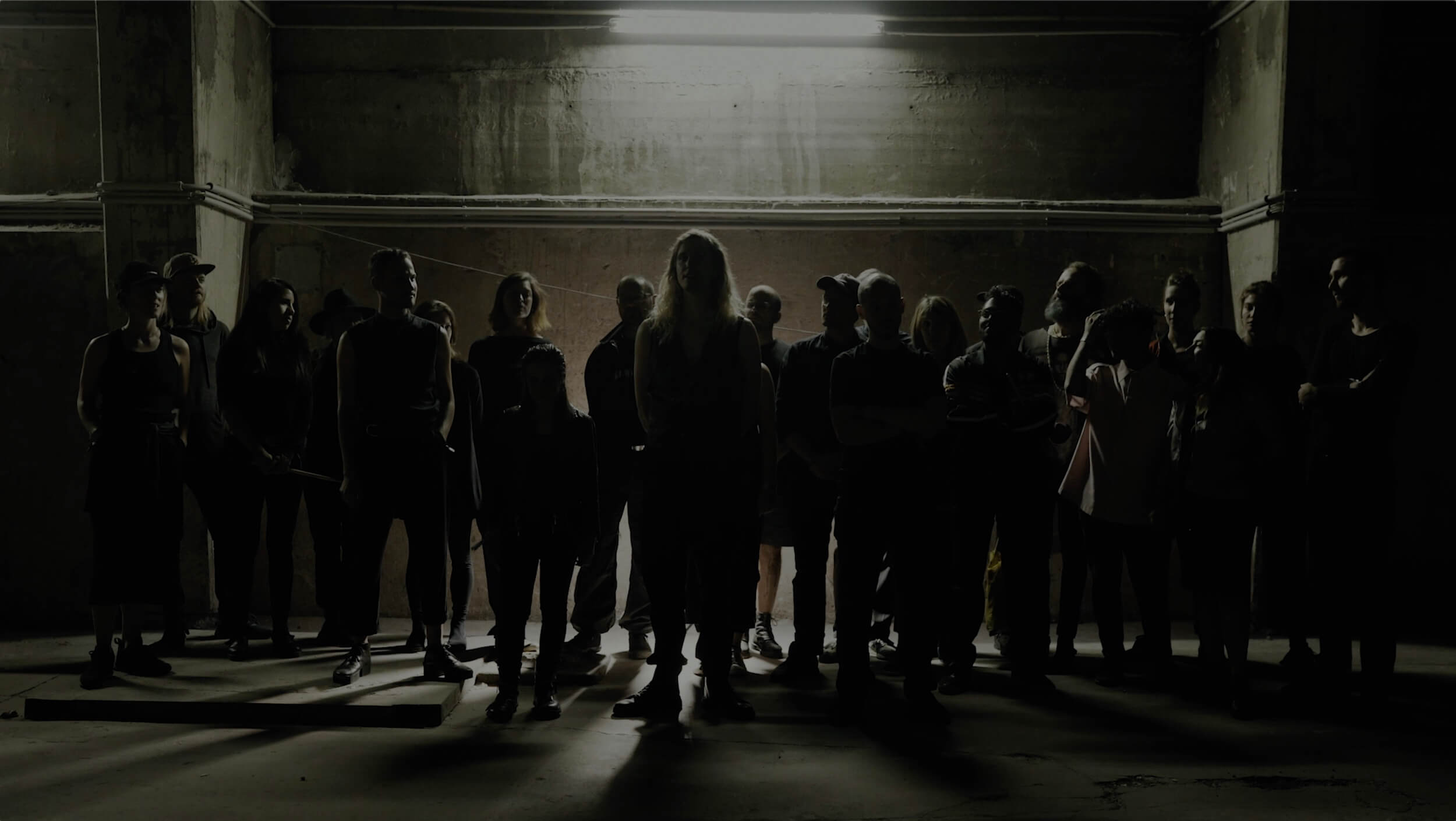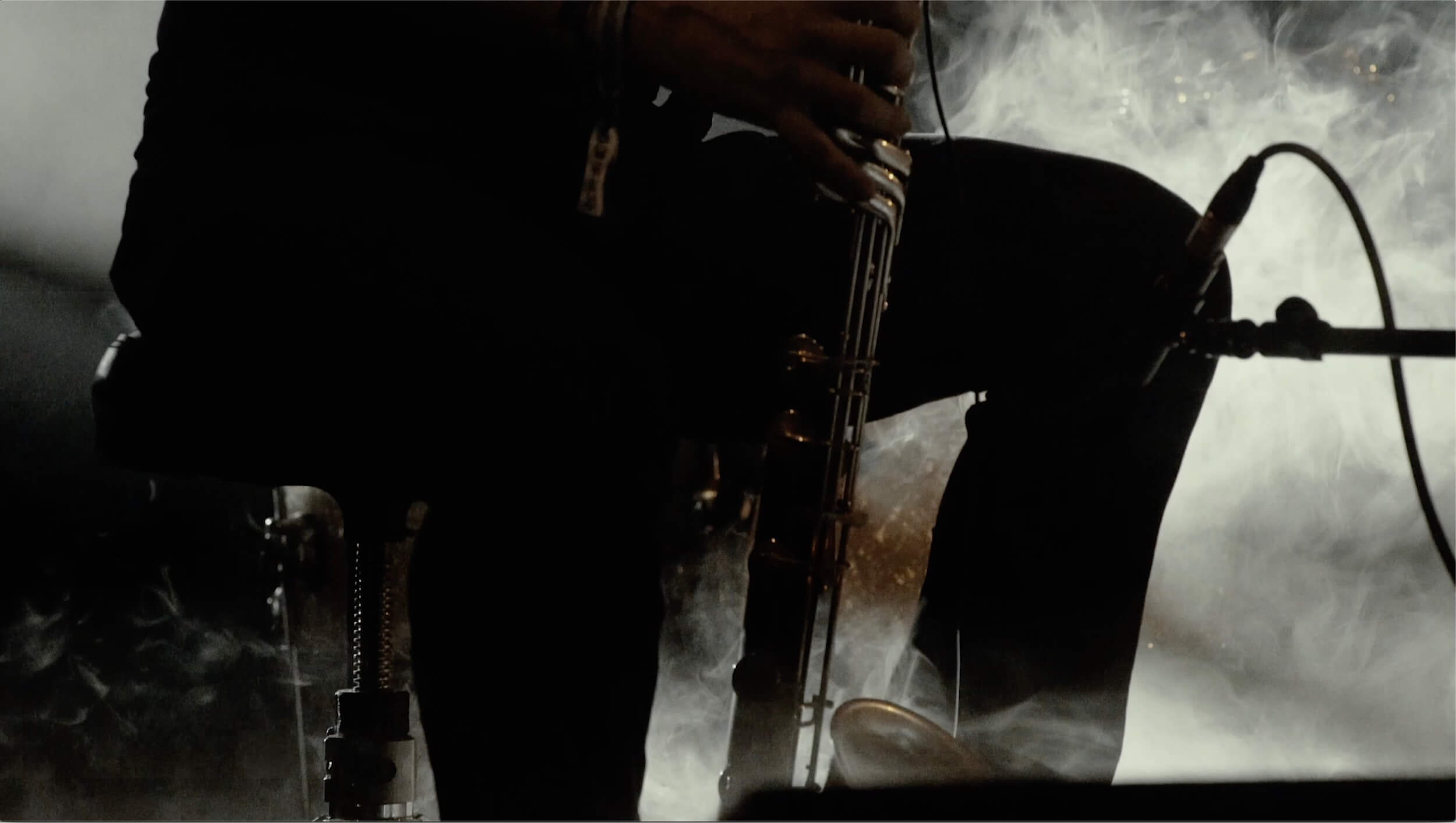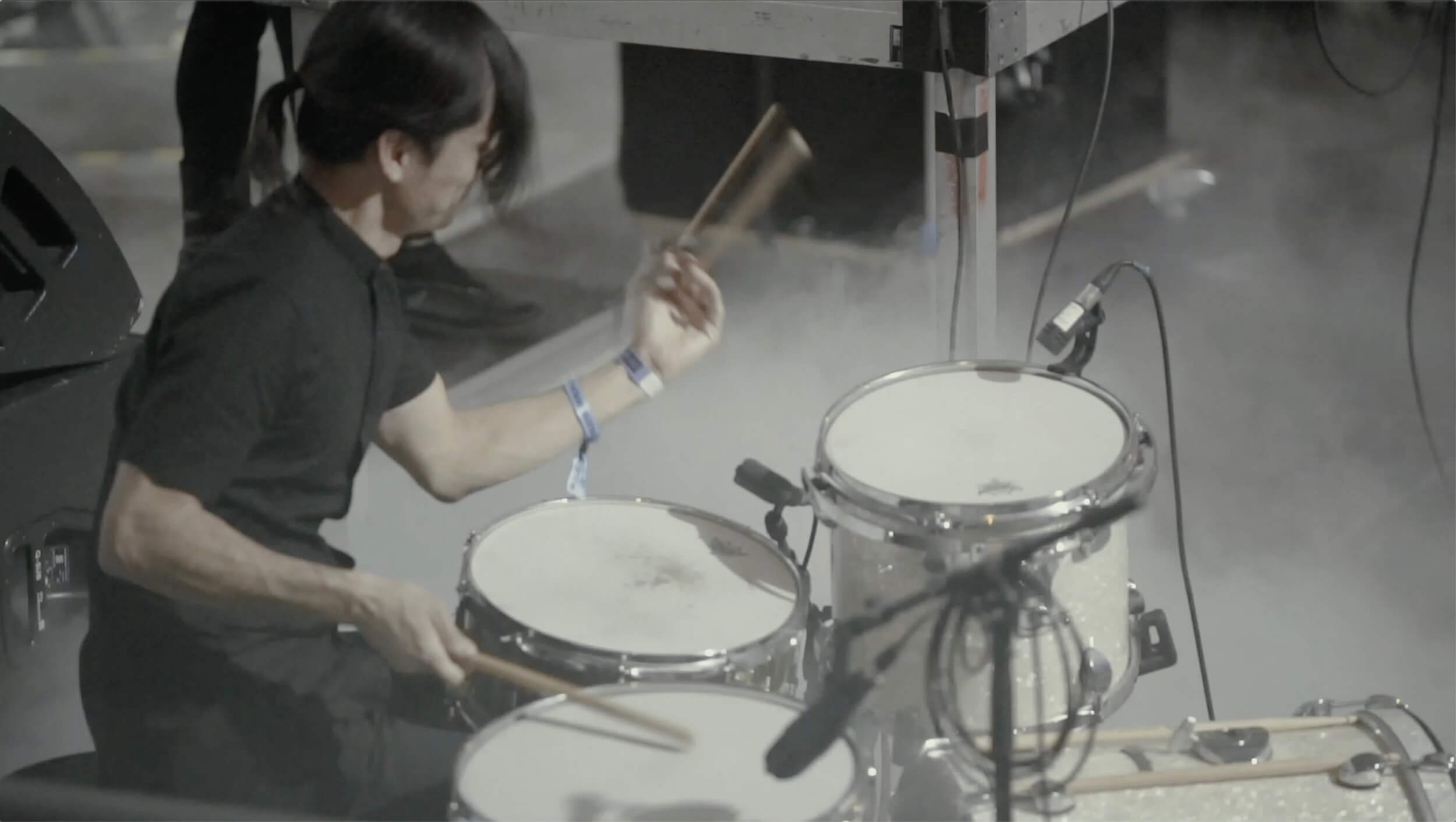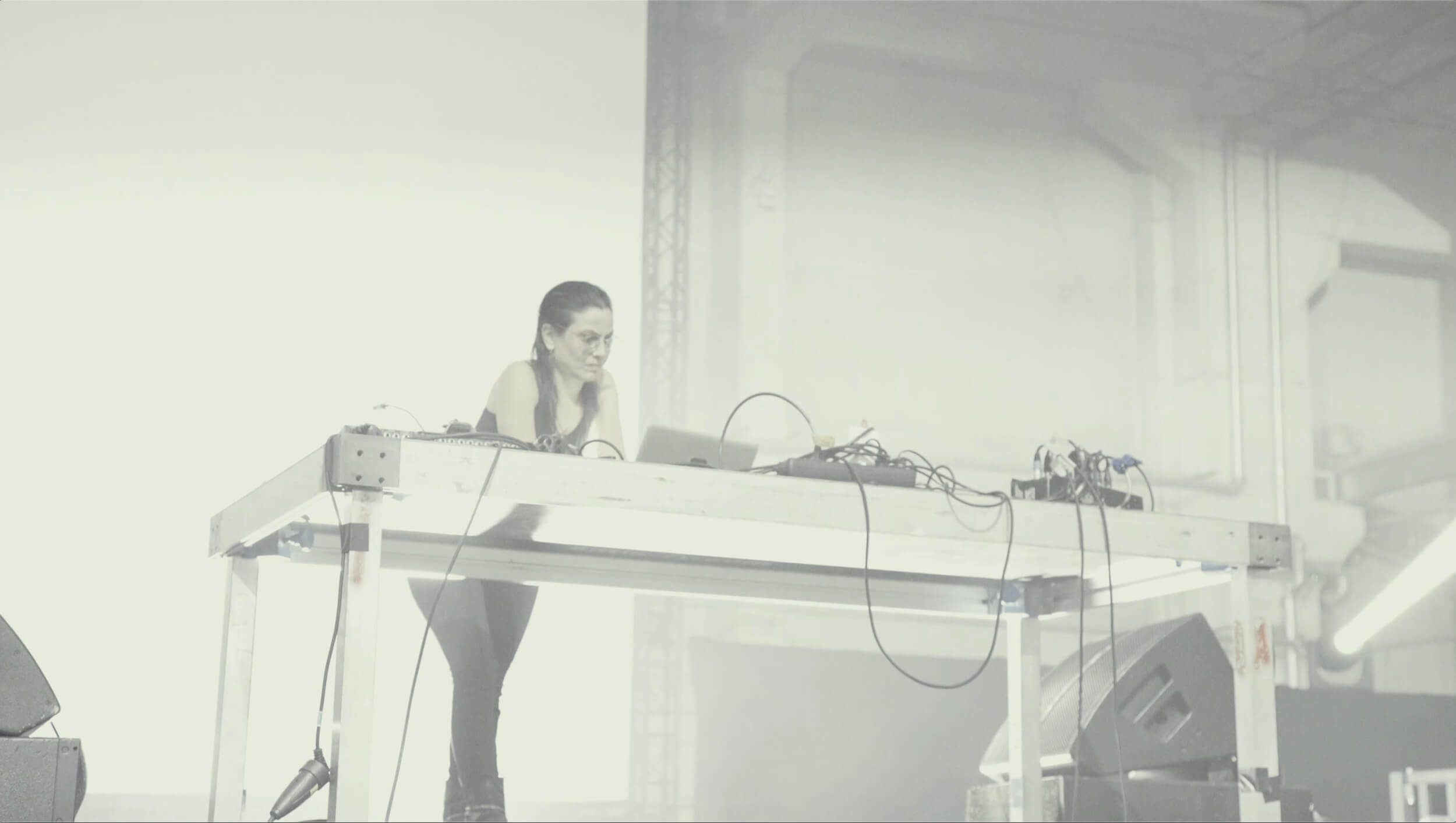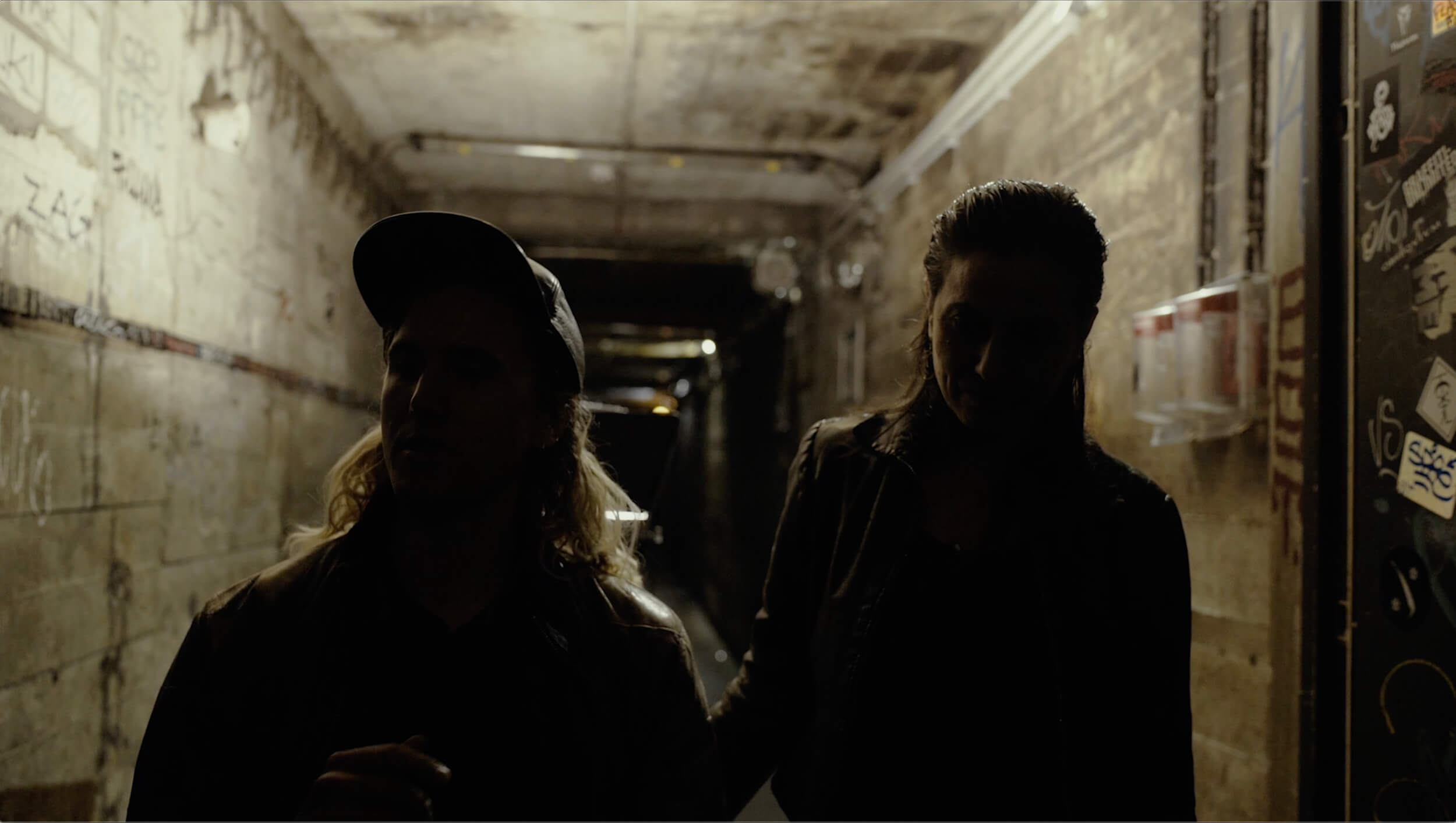next time, die consciously (بیگانگی) | 2018
Performed at Kraftwerk Berlin in August, 2018.
LABOUR’s debut work for Berlin Atonal 2018 operates simultaneously on multiple temporalities — from microsounds and stochastic synthesis to rhythmic cycles to acknowledging that which propels beyond — and takes a critical stance towards notions of regulated time by embracing rhythmic instability and sound as sculptural material.
Born from several years of research and contemplation on the construction-of-self, this work considers the extent to which external forces create us — heteronomy is the condition of all things — the extent to which we are constructable and therefore deconstructable beings, thus providing the potential for great transformation.
Selected Press:
Credits:
by: LABOUR (Farahnaz Hatam & Colin Hacklander)
2nd drumset: Masaya Hijikata
bass clarinet & percussion: Yoni Silver
video art direction: Evelyn Bencicova
additional video team: Jakub Kubica and Jakub Gavelier
light: MFO (Marcel Weber)
stochastic lights: Fredrik Olofsson
stochastic drum ensemble: 30 performers, names omitted
special thanks to: Callie’s, Gewärtler Stiftung, Berlin Atonal, and NU Unruh for the loan of metal percussion pieces
